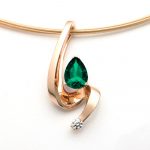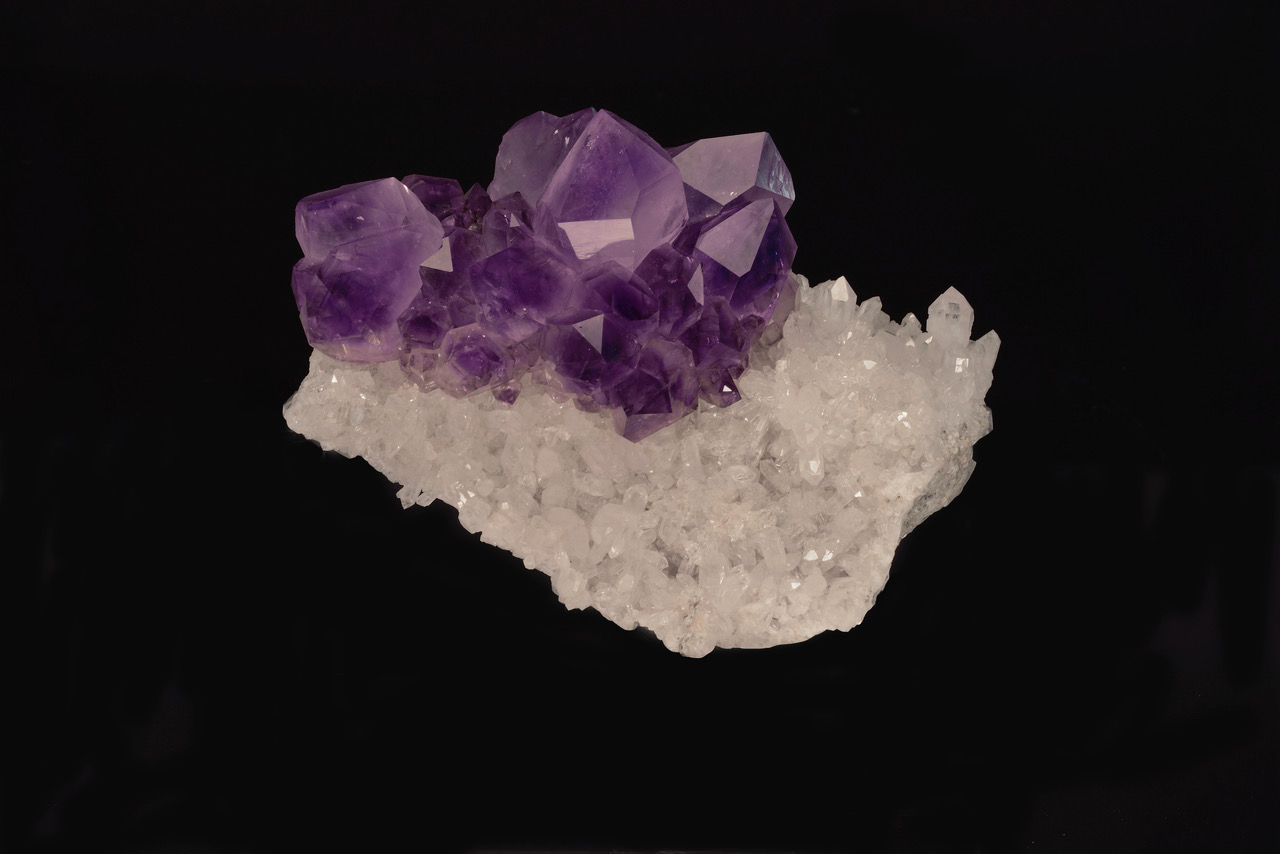
14k yellow gold pendant, set with pear-shaped Chatham-created emerald and small diamond. Courtesy VerbenaPlaceJewelry.com.
Emeralds are some of the most beloved gemstones in the world—especially by those whose birthdays are in May. However, richly colored, unflawed or lightly flawed emeralds are difficult to find and very expensive when they are found. So it was only natural that someone would try to do better than Mother Nature. In the 1930s, Carroll Chatham succeeded. Other growers soon followed.
As they grow in the earth, emeralds are subject to temperature changes, intense pressures, and impinging hot liquids that can burn, melt, crush, or corrode the stones. Violent mining methods don’t help. As a result, many mined emeralds come from the ground with a number of inclusions and fractures that can not only dull the beauty of the stones, they can weaken the stones as well. In fact, emeralds can be notoriously difficult to cut and set if they are badly included.
Grown in a controlled environment—with constant pressures, temperatures, and a steady supply of the right chemicals–man-made or lab-grown emeralds are much less included, and often more brilliant than commercial-grade natural stones. (See the image above from Verbena Place Jewelry.) Because there is less “stuff” in them, they are also more durable than many natural emeralds with their eccentricities.
And, as a bonus, lab-grown gemstones are less expensive than their natural counterparts. Hundreds of dollars a carat as opposed to tens of thousands of dollars a carat.
The thing to remember about lab-grown emeralds, such as the Chatham-created emeralds, is that they are really emeralds. They have the same optical, chemical, and physical properties as an emerald that grows in the earth. They can make an excellent choice for a May-born emerald lover.


No Comments